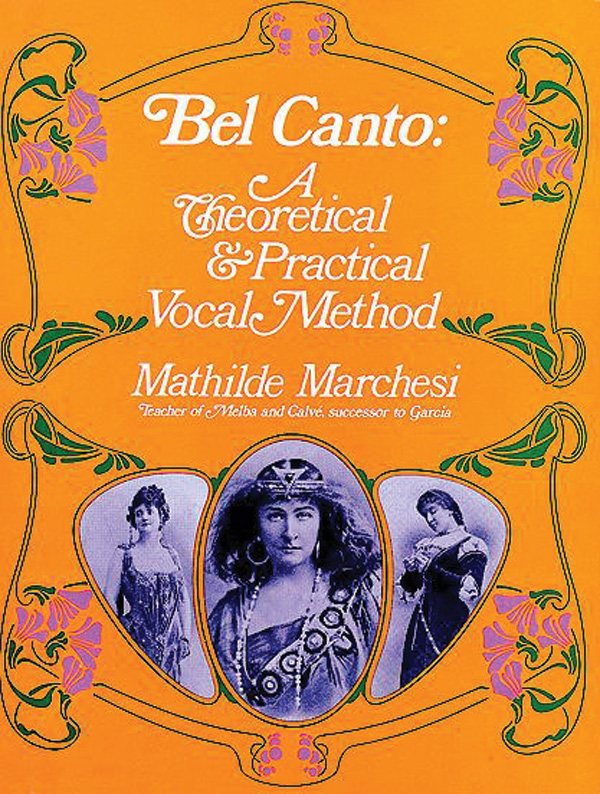Bel canto (Belcanto, bel canto) (Italian, beautiful singing), an Italian musical term, refers to the art and science of vocal technique which originated in Italy during the late sixteenth century and reached its pinnacle in the early part of the nineteenth century during the Bel Canto opera era. Bel canto singing characteristically focuses on perfect evenness throughout the voice, skillful legato, a light upper register, tremendous agility and flexibility, and a certain lyric, "sweet" timbre. This volume embodies Madame Marchesi's "vocal alphabet," or basic instructions and exercises that formed the voices of her great pupils. An introductory text discusses breathing, attack, registers and similar matters, while the remainder of the book contains many exercises and vocalises that teach voice management and projection. Marchesi's book is today even more important than when it first appeared, for it offers the basis for a construction of the bel canto training system. At the time the book appeared, the bel canto system had gone out of fashion in favor of more modern schools that seemed to offer more rapid maturation, voice volume, and dramatics. Today, a more realistic reevaluation has revealed that the bel canto system gave the singer much longer performing life, a more pleasing voice, and far greater musical ability. As Phillip Miller states in his introduction, "a solidity, a sure technical mastery, an even scale with no register break... strong, even and secure trills, their coloratura masterly." In addition, the resurgence of interest in early 19th century opera renders a work like Marchesi's indispensable to the modern singer. |


